 |
||
|
||
| ||
By tradition today we are are reviewing hard discs from Western Digital. Western Digital Caviar (BB series)
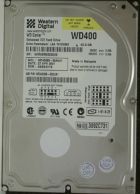
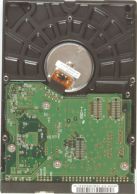 At the present moment the major series of WD discs has a spindle rotation speed equal to 7200 rpm. These discs have a strong position on the market today - 20 GBytes per platter, the proprietary technology Data LifeGuard (TM). The series contains discs of 20, 30 and 40 GBytes. The 60 and 80 GBytes discs belong to a different series due to a higher record density despite the same letter signature. As usual, I tested a 40 GBytes disc. The case of the disc is typical of IBM. All electronic circuits of the disc lie on the internal side of the card. It seems that it is done so to protect the static electricity, but at the same time, heat removal worsens. Let's hope that the engineers have prevented it also. At least, during our tests no problems arose. Western Digital Caviar (AB series)
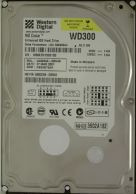
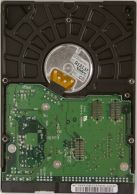 And this is a new product - 30 GBytes per platter! The line contains discs of 30, 40 (?) and 60 GBytes. But this time I changed my mind and tested a 30 GB disc. First of all, I don't like three-head discs very much. Secondly, a true volume of a disc with 2 platters, 3 heads and a 30GB-per-platter density makes not 40, but 45 GBytes. That is why, despite the identical characteristics of the discs according to the site, I decided to examine a 30 GBytes model. In appearance the disc doesn't differ from the Caviar BB - you may tell one from the other only when comparing them. The detailed characteristics are shown in the table.
TestsThe tests were carried out according to our testing technique. Ziff-Davis WinBench 99 - 7200 rpm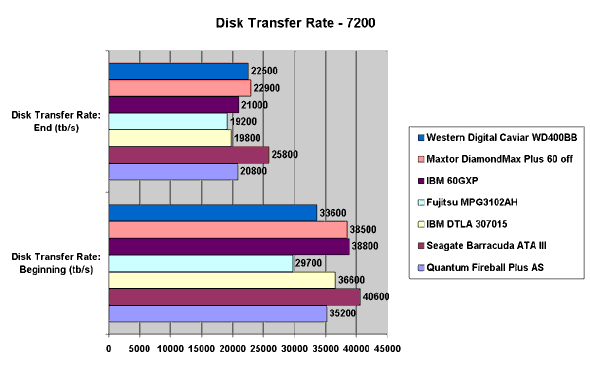 Unexpectedly, the maximum linear reading speed turned to be low. In this parameter the WD disc loses to all competitors with 20 GBytes per platter. Oil on the flames was poured by a utility which must have set the UDMA mode - dlgudma.exe, you can download it from here.  As you can see, the program refused to admit a disc's ability to work in Ultra ATA/66/100 mode. This situation occurred not only with the i815E chipset, but also with the Promise FastTrak 100 controller and the VIA Apollo KT133 chipset. The BIOS, however, reported on the enabled Ultra ATA/100 (or 66, if the chipset doesn't support more). But according to the various reviews of this series, I found out that other have similar results (moreover, the utility was working correctly on the i440BX). And looking at the graph of reading, I understood what the problem was. The first zones Western Digital Caviar WD400BB
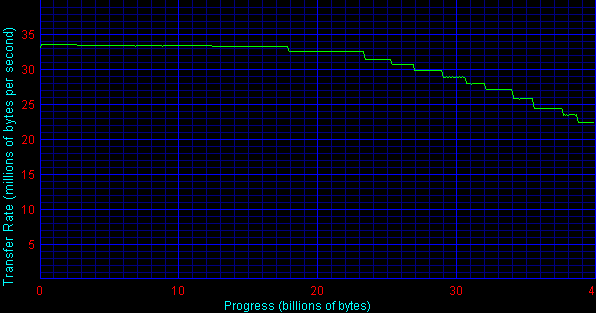 of the disc are stretched out too much. And this allows reaching a high read speed on a large part of the surface at the expense of reducing a peak speed - almost up to 18 GBytes. 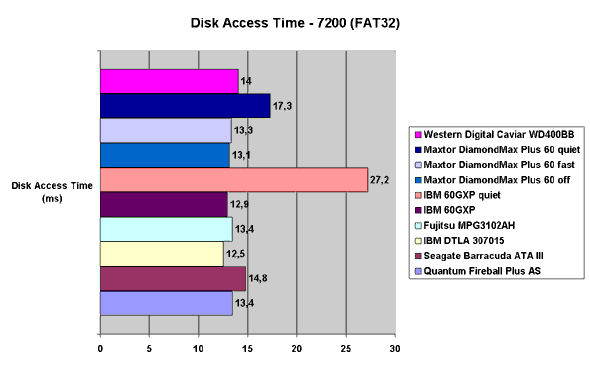 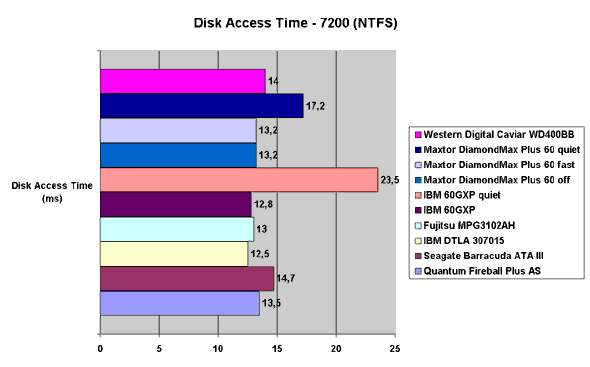 The result is average, and it is even worse than that given in the documentation (we have obtained 14 ms against the 8.9+4.2=13.1 ms according to the specs).  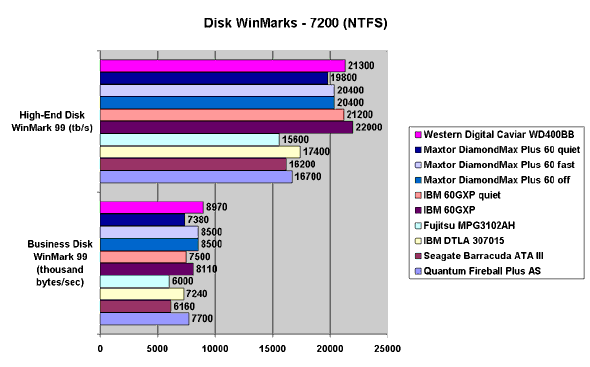 Here is all right - the first place in the Business WinMark test and the second position in the High-End. Ziff-Davis WinBench 99 - 5400 rpm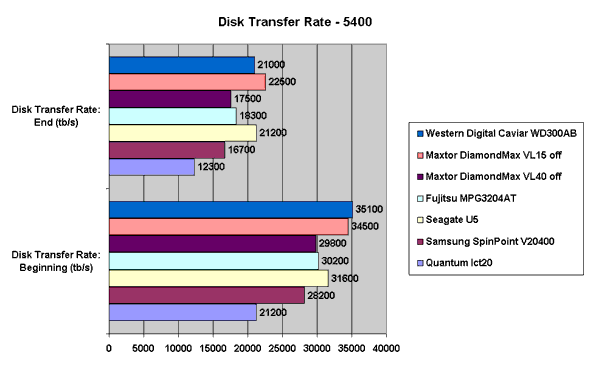 Well, the junior has outscored the senior! As for the graph, it looks like that of the WD400BB - the same stretched out initial zones (till 11 GBytes, however). Western Digital Caviar WD300AB 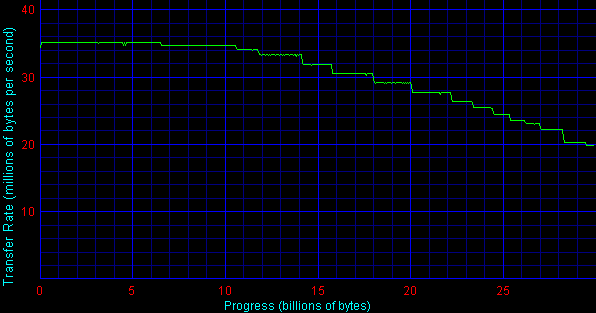 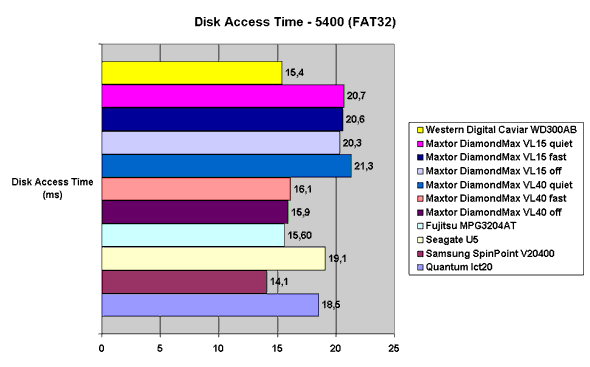  The access time is quite good and coincides with the specified characteristics: 9.5 + 5.0 = 14.5 ms. With such results the disc must take the lead in the WinMarks tests.  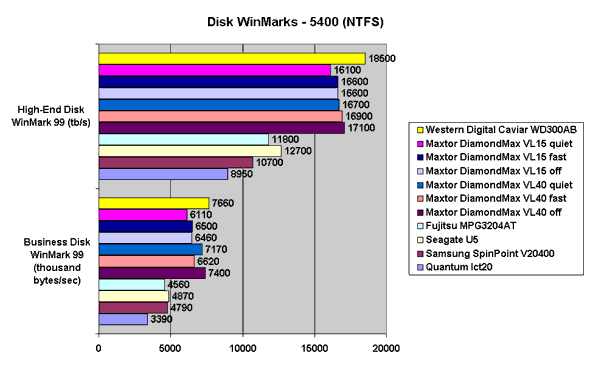 Well, this did happen. The disc outperformed the others by a great margin. The full results of the tests can be found in the table. Intel IOMeterFor the full results refer to the table, and here I will give you only some extracts. 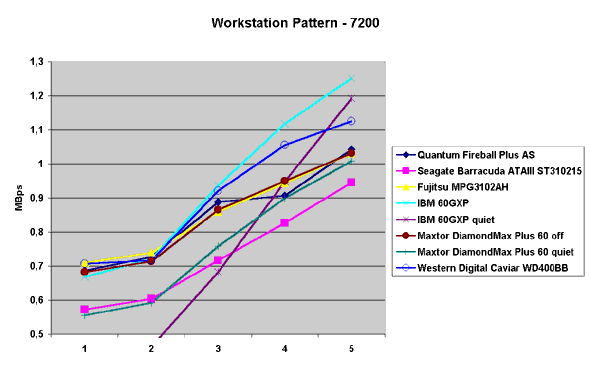 Not bad. Only the IBM is ahead.  The situation is identical. 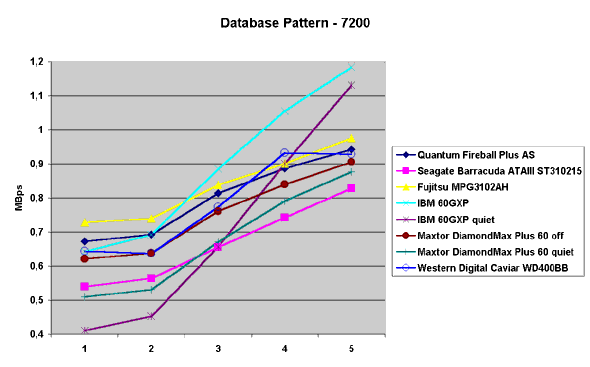 And here the layout is vague and unclear, and I have no ideas about it.  The graph is very similar to that of the Maxtor DiamondMax VL15, but it goes a bit lower. 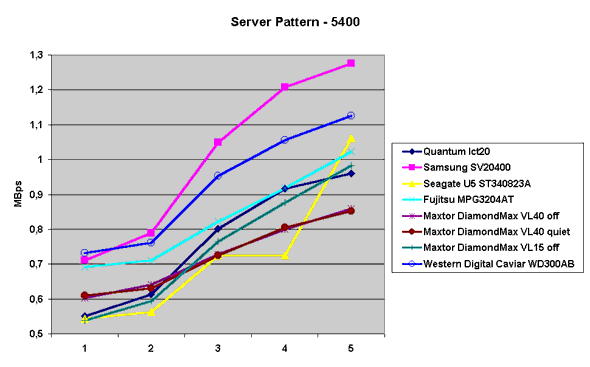 Quite a good achievement! But I doubt that one would like to use such a disc in a server. 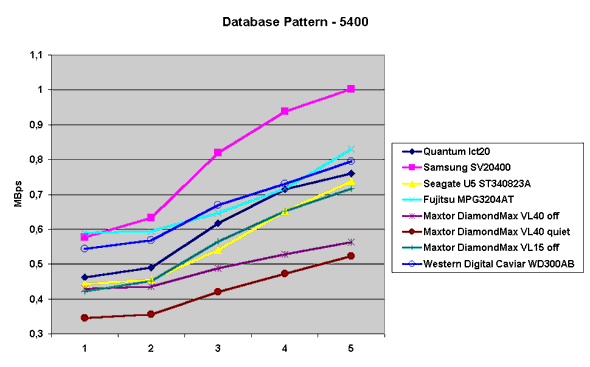 Not bad. ConclusionWell, we have acquired a new leader among 5400 rpm discs. But how long such situation will last I don't know, since the Seagate U6 is appearing on the scene. The WD Caviar of the BB series is also not that bad and quite competitive disc for today. Any other comments are, to my mind, unnecessary. Write a comment below. No registration needed!
|
Platform · Video · Multimedia · Mobile · Other || About us & Privacy policy · Twitter · Facebook Copyright © Byrds Research & Publishing, Ltd., 1997–2011. All rights reserved. |